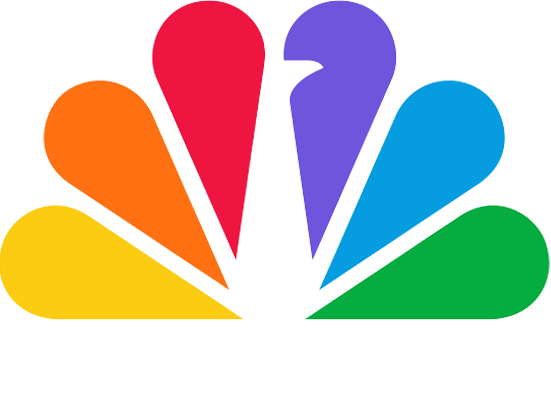WHEN: Today, Tuesday, April 18, 2023
WHERE: CNBC’s “Closing Bell”
Following is the unofficial transcript of a CNBC exclusive interview with Bank of America Chair & CEO Brian Moynihan on CNBC’s “Closing Bell” (M-F, 3PM-4PM ET) today, Tuesday, April 18th. Following is a link to video on CNBC.com:
All references must be sourced to CNBC.
BECKY QUICK: I want to welcome Brian Moynihan. Brian, earnings very strong across the board. Scott just mentioned a lot of the numbers. I think it was the net interest income that had so many people kind of watching and wondering what happens next. Those numbers are strong, it means that you can get deposits paying out very low amounts of interest to people but you give out loans at higher rates. What are you seeing just as we get deeper into this towards the end of the quarter as things change so much with banking? Is the net interest income is that a number you think can continue or how did things change and how do they shape?
BRIAN MOYNIHAN: Well, at the end of the day, it’s good to talk to you again, Becky, and thank you. The team at Bank of America had a great quarter $8 billion plus in earnings and 70% return on tangible common equity and we did it by growing loans year over year and having deposits stabilize as the Fed has withdrawn monetary combination QT shrinking their balance sheet, everything your colleagues were talking about before. The money’s moved to off the bank balance sheets out of the system, but our deposits are set up relatively well. And I think even through the in March even through the changes of March and the banking system, our deposits held up well, performed a little bit better than we thought we did. So we had $14.6 billion in NI for the quarter up 25 percent as you said but the real question is what we do. We we open accounts for people and they give us deposits and we turn around and make loans to people or we invest — and that’s been going on for years. That’s it. It’s called banking and then we have fee revenue streams and all that performed well late quarter albeit that the pace of rate rises has slowed. So therefore you’re starting to see it flatten out and it was down a little bit quarter to but more or less flat and we see that continuing in the future. And we gave some guidance today. They’d be down a little bit next quarter. But we feel pretty good about it.
QUICK: You said today that you’re anticipating a mild recession at this point just based on what you’re seeing with the consumer, which still looks strong, maybe a little bit of a slowdown when it comes to commercial issues, commercial loans, but is that dependent on the Fed slowing things down after this next rate hike that’s anticipated?
MOYNIHAN: We base our earnings on the market. The market has one fed increase left in a four curve and then has cuts. Whether those come true or not, that’s really gonna be dependent on what the Fed sees after they at each meeting because they’re completely driven by trying to figure out what’s going on in the data. Our team, okay, the — and research team have a recession and have consistently had a recession predicted for the second half of this year, third quarter, fourth quarter, first quarter of next year and then ends then we start to see positive growth. And so that’s based on the Fed tightening having finally taken hold and those experts see that. When we look at our consumers though, you can see the core conundrum that faces the Fed. Our consumers spent 9% more in March of 2023 than they did in March 2022. They spent about 8% in the first quarter more than they spent last year in the first quarter and they’re spending on things frankly which drive employment and meaning they’re spending one experiences at amusement parks or theaters or restaurants or outside concerts or outside entertainment all these things drive people to make them happen as opposed to other things buying a product which would come from another country potentially so U.S. employment is very strong. So our customers are seeing wage growth and seeing wages and they also have money in their account still a lot of stimulus money left in so that’s what the Fed is trying to slow down and albeit I think we see and our experts see them having a mild recession, which if they could do that, and unemployment never got much above four and a half that would be a heck of an accomplishment. And so that’s the base case and we are running the company accordingly.
QUICK: Deposits were down just slightly but you’re still talking about deposits up over $500 billion dollars from what they were pre pandemic at the end of 2019 are going through that. You and I have talked a lot in the past about deposits being sticky. Are they still going to be sticky? Because one thing we’ve learned during the the issues the banks have been having recently is that people are willing and able to move their money pretty quickly electronically.
MOYNIHAN: Yeah I think if you look across our customer base, it deposits is a great big word and it’s 1.91 trillion of them in Bank of America. It is up $500 billion or more since pre pandemic and you’d say well, is that going to go back out? And the answer is the economy on a real on a gross basis is up a lot also so the industry’s deposits are up 31%. Ours are up 34%. We have gained share during the pandemic and its aftermath and that’s by opening up since the pandemic started, we’ve opened up two and a half million net new checking accounts in our consumer business. Our wealth management customers have opened up 25,000 or so bank accounts last quarter, the first quarter this year. You know, we just keep deepening our relationships and driving it that means our deposits are inherently sticky because different customers are using the cash for different purpose. If you’re a core, general consumer in our consumer business, your money’s coming in and out of your household, you’re paying your bills, etc. If you’re a wealthy customer when cash funds were basically getting zero and it has nothing to do with the money you just left it sitting at the bank when cash when a money market yields or direct treasuries went up, you lose some out. We expected that to happen. Matter of fact, we did it for the customers that’s the way it works. And then when your corporate customers are same thing and there’s even some tedious stuff that in there called earnings credit rate and things like that, but basically companies pay us for the service by leaving deposits with us and if we raise that rate they can leave less deposits. Now interestingly, those deposits have been relatively stable the last six months so each customer base each who it is what they do with the money investment cash versus transactional cash is very different. But at the end of day $1.91 trillion in deposits. They’ve been relatively stable last six months. We showed some details of that. And, you know, we feel very good about that. Given those deposits, we make loans and serve our customers that way.
QUICK: Hey Brian, Warren Buffett said that he expects more bank failures but he also said that he doesn’t think any depositor is going to lose a dime in any of this. How would you kind of sum up how you see things shaking out with the turmoil in the banking business lately?
MOYNIHAN: Well, I think our industry has great capital, great liquidity, is managed well so and so if you look at it, you know, the FDIC insurance ensures that depositors don’t lose the money underneath the insurance levels. Typically, when a bank fails, all deposits are bought by an acquiring bank. There was a little bit of difference in the March things where they had to make some systemic declarations. But at the end of the day, you want the depositors to go on and conduct their daily business while the shareholders and debt holders take a hit. And that’s what happened. The key that we have to remember is we pay for all that and meaning industry pays its own way in terms of the insurance. The government guarantees it but the industry reimburses the government for that. That’s one of the reasons why our expenses were up this quarter, we had an additional 100 million dollars in deposit insurance costs. It had nothing to do with what went on in the first quarter but they were scheduled to go up and so I think we feel very good about this industry. It’s well managed, the business models that were challenged early this in March were very different than the banks that the regional banking system and stuff and we’ve seen the stability come in and that’s a very good thing for America quite frankly because the strength of our banking system is one of the things that holds us in great stead all over the world.
QUICK: Brian, unrealized losses on hold to maturity bonds, you brought that number down from $108 billion three months ago to $99 billion now. That’s a big number. Obviously, it’s nothing compared to the deposits you have, not going to be an issue in terms of being able to hold those things to maturity, but how does it impact profitability earnings wise for the company?
MOYNIHAN: It really does. And we also showed the data that the rates on our on our trillion dollars we have to put to work every day because we have $1.9 trillion plus other cash from debt and other things to put to work. We have only have a trillion of loans that goes into cash AFS securities held to maturity securities, you look at those things as on average, they keep going up each quarter and people say how could that happen if they’re fixed rate? Well, a lot of it’s floating rate a lot of it was fixed rate stuff hedge it so that keeps marching forward. So at the end of day, our we had 25% more net interest income last year’s first quarter, this year’s first quarter. We held up better than we originally planned. We thought we have 14.4 billion, we have 14.6 but it’s the way you extract the value of those deposits and so we quit investing in a held to maturity in mid 2021. And it’s just been running off but that was a plan once we figured out that deposits were going to be staying in the industry because of the stimulus and the things that went on during the pandemic, we then had to invest them even when short term rates were zero to produce some revenue otherwise we basically are running the business for no profit and then we did that and then we let it run down. And you know $8 billion after taxes is a pretty good quarter.
QUICK: Yeah, it is. Brian, I want to thank you very much for your time today. Brian Moynihan, Bank of America.
MOYNIHAN: Thank you Becky.

















